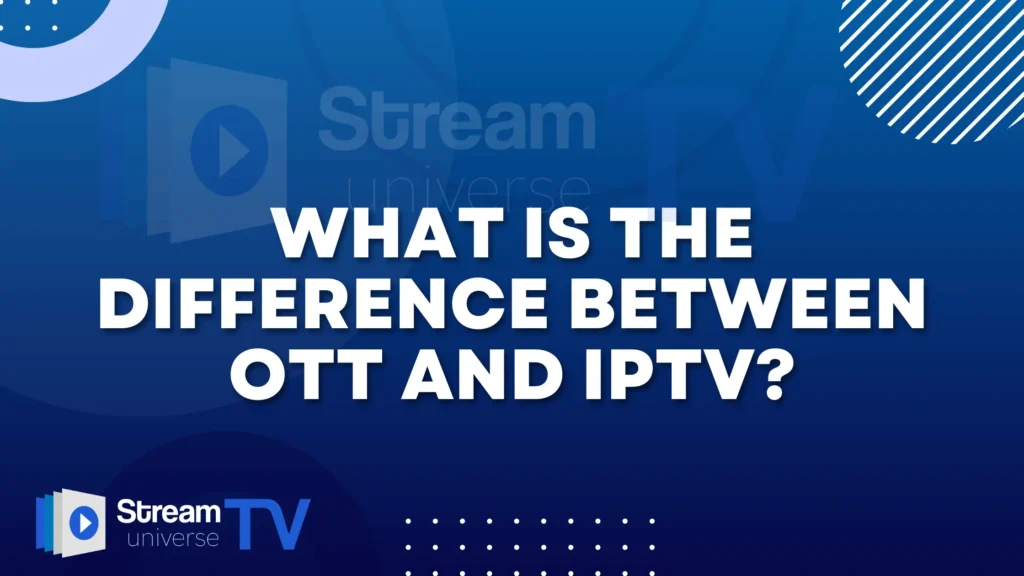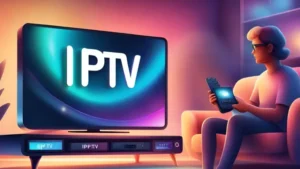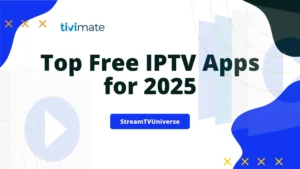Television and video streaming have changed a lot over the years. Now, many people use Over-the-Top (OTT) and Internet Protocol Television (IPTV) to watch their favorite shows and movies. While these two methods are similar, they have some important differences.
Let’s take a closer look at what OTT and IPTV are, and how they are different.
Traditional cable and satellite TV are not as popular as they used to be. More people now prefer OTT and IPTV because they offer more choices and flexibility. But what exactly are OTT and IPTV, and how are they different?
What is OTT?
OTT, or Over-the-Top, is a way to watch TV and movies using the internet. You don’t need a cable or satellite subscription. You can watch OTT content on different devices like smart TVs, smartphones, tablets, and computers. Some popular OTT services are Netflix, Amazon Prime Video, Hulu, and Disney+.
Key Features of OTT
- Accessibility: You can watch OTT services from anywhere with an internet connection.
- Subscription Models: You usually pay a monthly or yearly fee to access content.
- On-Demand Content: You can choose what to watch and when to watch it.
- Platform Variety: You can watch on many different devices, making it very convenient.
What is IPTV?
IPTV, or Internet Protocol Television, is a way to watch TV using the internet through a special network. Unlike OTT, IPTV is usually provided by your internet service provider and can be part of a package deal with internet and phone services. IPTV includes live TV, time-shifted media, and video-on-demand (VOD).
Key Features of IPTV
- Service Provider Dependency: IPTV is offered by specific service providers, often bundled with other services.
- Live TV and On-Demand: You can watch live TV and also access on-demand content.
- Dedicated Network: IPTV uses a private network, ensuring stable and high-quality streaming.
- Interactivity: Many IPTV services offer features like pausing live TV, recording shows, and catch-up TV.
Infrastructure and Delivery Methods
OTT Infrastructure
OTT services use the public internet to deliver content. The content is stored on cloud servers and delivered to your device over the web. The quality of the service depends on your internet speed and network conditions.
IPTV Infrastructure
IPTV uses a private, managed network controlled by the service provider. This makes the service more stable and reliable compared to OTT, with less buffering and better picture quality.
Content Delivery and Quality
OTT Content Delivery
With OTT, the content is delivered directly to your device over the internet. You can watch movies, TV shows, and original programming. However, the quality can vary based on your internet connection, and you might experience buffering during peak times or with slower internet speeds.
IPTV Content Delivery
IPTV content is delivered through a managed network, ensuring consistent quality. You get live TV, recorded shows, and on-demand content with minimal buffering and high resolution.
User Experience
OTT User Experience
OTT platforms have user-friendly interfaces and large libraries of content. You can easily browse, search, and watch your favorite shows or movies. The ability to stream on multiple devices adds to the convenience of OTT services.
IPTV User Experience
IPTV offers a traditional TV experience with added features like time-shifted media and VOD. You can watch live TV, record shows, and access on-demand content. IPTV services are usually accessed through a set-top box, but apps for smart TVs and other devices are also available.
Cost Comparison
OTT Pricing
OTT services usually charge a monthly or yearly fee. Prices vary depending on the level of access and the number of simultaneous streams. Some services offer premium pricing for ad-free content or additional features.
IPTV Pricing
IPTV services are often bundled with internet and phone services, making the pricing structure more complex. Standalone IPTV packages are available, but many users choose bundled deals for better value. The cost varies based on the provider and package features.
Pros and Cons
OTT Pros
- Easy access from anywhere
- Flexible subscription options
- Large content libraries
- Compatible with many devices
OTT Cons
- Dependent on internet speed
- Possible buffering and lower quality during peak times
IPTV Pros
- Consistent quality and reliability
- Live TV and on-demand content
- Interactive features like recording and live pause
- Often bundled with other services
IPTV Cons
- Requires a specific service provider
- Less flexible subscription options
- Usually needs a set-top box or specific app
Detailed Comparison
Availability and Flexibility
OTT services are widely available and can be accessed from any location with an internet connection. You can watch OTT content on multiple devices such as smart TVs, smartphones, tablets, and computers.
This makes it very flexible, especially for people who travel a lot or live in different places. IPTV, however, is tied to a specific service provider.
You usually need to use a set-top box or a special app provided by your IPTV service provider. This can limit your flexibility compared to OTT services.
Quality and Reliability
Since OTT relies on the public internet, the quality of your streaming experience can vary. If your internet connection is slow or unstable, you might experience buffering, lower resolution, or interruptions.
In contrast, IPTV uses a private, managed network controlled by the service provider. This ensures more reliable streaming with less buffering and higher quality, even during peak usage times.
Content Options
OTT services offer a vast library of on-demand content, including movies, TV shows, documentaries, and original programming.
This allows users to watch what they want, when they want. IPTV also offers a wide range of content, including live TV channels, time-shifted media, and video-on-demand.
However, IPTV often provides more interactive features, such as the ability to pause live TV, record shows, and access catch-up TV.
Subscription and Cost
OTT services typically offer different subscription plans, allowing you to choose a plan that fits your budget and needs. You can opt for basic plans with ads or premium plans without ads and with additional features.
IPTV pricing is usually bundled with other services like internet and phone. While this can provide good value, it also means you might end up paying for services you don’t need.
Standalone IPTV packages are available, but they can be more expensive than OTT subscriptions.
Conclusion
Both OTT and IPTV have their own advantages and disadvantages. OTT offers more flexibility and a vast range of content that you can access from almost anywhere with an internet connection.
IPTV, on the other hand, provides a more reliable and higher-quality streaming experience with additional interactive features.
When choosing between OTT and IPTV, consider your specific needs and preferences. If you value flexibility and a wide range of on-demand content, OTT might be the better option for you.
If you prefer a more stable and high-quality streaming experience with live TV and interactive features, IPTV could be the right choice.
In the end, both technologies offer modern ways to enjoy television and video content, making it easier and more enjoyable than ever before.
Whether you choose OTT or IPTV, you’ll be able to watch your favorite shows and movies in a way that suits your lifestyle.
Also Read:






